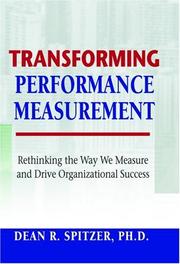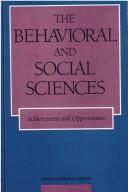| Listing 1 - 10 of 12 | << page >> |
Sort by
|
Book
ISBN: 0805783148 Year: 1989 Volume: 6 Publisher: New York, NY : Twayne,
Abstract | Keywords | Export | Availability | Bookmark
 Loading...
Loading...Choose an application
- Reference Manager
- EndNote
- RefWorks (Direct export to RefWorks)
Short story --- Nouvelle --- Woolf, Virginia, --- Criticism and interpretation --- Critique et interprétation --- Fiction --- Short story. --- Women and literature --- Technique. --- History --- Criticism and interpretation. --- Critique et interprétation
Book
ISBN: 0470263008 0412151901 1489972307 9780470263006 Year: 1978 Publisher: London: Chapman and Hall,
Abstract | Keywords | Export | Availability | Bookmark
 Loading...
Loading...Choose an application
- Reference Manager
- EndNote
- RefWorks (Direct export to RefWorks)
Macromolecular systems --- Cells --- Organoids --- Cell metabolism --- Biodegradation --- Lysosomes --- Cellules --- Biodégradation --- Metabolism --- Métabolisme --- Macromolecular Substances --- metabolism --- Biodégradation --- Métabolisme --- metabolism. --- Cell Cycle. --- Macromolecular Substances. --- Organoids - metabolism --- Cells - metabolism --- Cell aging --- Cellular degradative processes

ISBN: 0814408915 9780814408919 9786611126582 1281126586 0814430090 9781281126580 9780814430095 Year: 2007 Publisher: New York : American Management Association,
Abstract | Keywords | Export | Availability | Bookmark
 Loading...
Loading...Choose an application
- Reference Manager
- EndNote
- RefWorks (Direct export to RefWorks)
You can't accurately gauge your company's performance if you don't know what -- or how -- to measure. It's no secret that you can't improve your organization's performance without measuring it. In fact, every function, unit, process, and the organization as a whole, is built and run according to the parameters and expectations of its measurement system. So you'd better make sure you're doing it right. All too often, performance measurement creates dysfunction, whether among individuals, teams, or across entire divisions and companies. Most traditional measurement systems actually encourage unhealthy competition for personal gain, creating internal conflict and breeding distrust of performance measurement. Transforming Performance Measurement presents a breakthrough approach that will not only significantly reduce those dysfunctions, but also promote alignment with business strategy, maximize cross-enterprise integration, and help everyone to work collaboratively to drive value throughout your organization. Performance improvement thought leader Dean Spitzer explains why performance measurement should be less about calculations and analysis and more about the crucial social factors that determine how well the measurements get used. His ""socialization of measurement"" process focuses on learning and improvement from measurement, and on the importance of asking such questions as: How well do our measures reflect our business model? How successfully are they driving our strategy? What should we be measuring and not measuring? Are the right people having the right measurement discussions? Performance measurement is a dynamic process that calls for an awareness of the balance necessary between seemingly disparate ideas: the technical and the social aspects of performance measurement. For example, you need technology to manage the flood of data, but you must make sure that it supports the people who will be making decisions and taking action crucial to your organization's success. This book shows you how to design that technical-social balance into your measurement system. While it is urgent to start taking action now, transforming your organization's performance measurement system will take time. Transforming Performance Measurement gives you assessment tools to gauge where you are now and a roadmap for moving, with little or no disruption, to a more "transformational" and mature measurement system. The book also provides 34 TMAPs, Transform...
Organizational effectiveness --- Evaluation. --- Management --- Business & Economics --- Management Styles & Communication --- Evaluation --- Diagnostic
Book
ISBN: 1108117708 1108100007 1108119107 110719024X 1316640345 Year: 2018 Publisher: Cambridge : Cambridge University Press,
Abstract | Keywords | Export | Availability | Bookmark
 Loading...
Loading...Choose an application
- Reference Manager
- EndNote
- RefWorks (Direct export to RefWorks)
The mediation of the balance between vigilance and restraint is a fundamental feature of judicial review of administrative action in the Anglo-Commonwealth. This balance is realised through the modulation of the depth of scrutiny when reviewing the decisions of ministers, public bodies and officials. While variability is ubiquitous, it takes different shapes and forms. Dean R. Knight explores the main shapes and forms employed in judicial review in England, Canada, Australia and New Zealand over the last fifty years. Four schemata are drawn from the case law and taken back to conceptual foundations, exposing their commonality and differences, and each approach is evaluated. This detailed methodology provides a sound basis for decisions and debates about how variability should be brought to individual cases and will be of great value to legal scholars, judges and practitioners interested in judicial review.
Judicial review. --- Common law. --- Anglo-American law --- Law, Anglo-American --- Customary law --- Review, Judicial --- Constitutional law --- Courts --- Delegation of powers --- Executive power --- Judicial power --- Legislation --- Legislative power --- Rule of law --- Separation of powers
Book
ISBN: 2763770029 9782763770024 Year: 1983 Volume: 6 Publisher: Québec: Presses universitaires de Laval,
Abstract | Keywords | Export | Availability | Bookmark
 Loading...
Loading...Choose an application
- Reference Manager
- EndNote
- RefWorks (Direct export to RefWorks)
French-Canadians --- Canadiens français --- Canadiens français --- French-Canadians - United States --- Canadiens francais --- Etats-unis --- 18e-19e siecles

ISBN: 0309037492 9786610221592 1280221593 0309542782 0585148945 9780585148946 9780309037495 0030937492 9781280221590 6610221596 9780309542784 Year: 1988 Publisher: Washington, D.C. : National Academy Press,
Abstract | Keywords | Export | Availability | Bookmark
 Loading...
Loading...Choose an application
- Reference Manager
- EndNote
- RefWorks (Direct export to RefWorks)
Social Sciences --- Social Sciences - General --- Social sciences --- Human behavior --- Research --- Action, Human --- Behavior, Human --- Ethology --- Human action --- Human beings --- Behavior --- Human biology --- Physical anthropology --- Psychology --- Psychology, Comparative

ISBN: 1280211857 9786610211852 0309583004 0585149615 0309042852 0309043964 9786610212309 1280212306 0309555701 0585025444 9780585025445 Year: 1990 Publisher: Washington, D.C. : National Academy Press,
Abstract | Keywords | Export | Availability | Bookmark
 Loading...
Loading...Choose an application
- Reference Manager
- EndNote
- RefWorks (Direct export to RefWorks)
Drug abuse --- Health insurance --- Treatment --- Government policy --- Economic aspects --- Financing, Government --- Substance Abuse Disorders --- 343.966 --- -Insurance, Health --- -Health plans, Prepaid --- Medical care, Prepaid --- Medical insurance --- Prepaid health plans --- Prepaid medical care --- Sickness insurance --- Ambulance service --- Health care reform --- Medically uninsured persons --- Surgical clinics --- -Treatment --- -Prospective payment --- Prospective payment --- Emergency services --- Outpatient services --- Rehabilitation services --- Substance Abuse --- -Drugs --- 343.966 Drugs --- -343.966 Drugs --- Health plans, Prepaid --- -Drug abuse --- Drugs --- Insurance, Health --- Insurance --- Home care services --- Hospitals --- Drug use --- Recreational drug use --- Substance abuse --- -Economic aspects --- -Government policy --- Psychiatry --- Toxicology --- North America --- therapy. --- United States --- Insurance [Health ] --- -Drug use
Book
Abstract | Keywords | Export | Availability | Bookmark
 Loading...
Loading...Choose an application
- Reference Manager
- EndNote
- RefWorks (Direct export to RefWorks)
DNA. --- DNA --- genetics --- genetic engineering --- genetic maps --- genetic code --- chromosomes --- genetic inheritance --- genetic parameters --- genetic variation
Book
ISBN: 0784470006 Year: 1997 Publisher: New York : ASCE Press,
Abstract | Keywords | Export | Availability | Bookmark
 Loading...
Loading...Choose an application
- Reference Manager
- EndNote
- RefWorks (Direct export to RefWorks)
This comprehensive text introduces the special principles and practices needed for successful design and construction in cold environments and explains how to adapt engineering specialties and disciplines to the particular requirements imposed by freezing temperatures. Each chapter includes a section of First Principles providing fundamental analysis of cold regions problems. Soil mechanics, hydraulics, thermodynamics, and heat flow are covered in detail. Topics include: principles of heat transfer; properties of frozen soils; freezing phenomena; roads and airfields; building foundations on permafrost; hydrology and hydraulics; water supply and delivery; sanitary systems and wastewater treatment; control of snow and ice; performance of materials in cold regions; equipment and operations; earthwork in cold regions; and site selection. This book is suitable for advanced undergraduate and graduate engineering students who intend to practice in cold regions. The book's practical content will be valuable to engineers who need to know the fundamental cold-regions requirements on topics that are not in their specialty areas.
Engineering --- Frozen ground. --- Cold region construction --- Cold regions engineering --- Cold regions --- Frozen soils --- Soil treatment --- Material properties --- Buildings --- Soil mechanics --- Cold weather conditions. --- Cold regions.
Book
Year: 1981 Publisher: Washington : National Academy Press,
Abstract | Keywords | Export | Availability | Bookmark
 Loading...
Loading...Choose an application
- Reference Manager
- EndNote
- RefWorks (Direct export to RefWorks)
| Listing 1 - 10 of 12 | << page >> |
Sort by
|

 Search
Search Feedback
Feedback About UniCat
About UniCat  Help
Help News
News